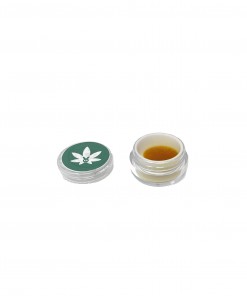Extracting the goods on cannabis concentrates: What you need to know.
Cannabis extracts give consumers the opportunity to enjoy cannabis in ways that the flower-loving hippie children of the late ‘60s could have only imagined.
Not only do concentrates and extracts provide a fun and efficient way to consume cannabis; they also provide consumers a way to expedite the way the body receives’ the plant’s medicinal benefits. By using a product in which the specific cannabinoids have been isolated and extracted, patients and recreational consumers alike can use a more targeted solution to help them do away with chronic pain or relax after a tough day. For producers, extracts and concentrates are an opportunity to create a highly refined product in which unwanted compounds can be eliminated or reduced.

What are cannabis extracts?
In a general sense, cannabis extracts are highly concentrated products derived from cannabis flower. They appear in a variety of forms from liquid to solid: some, like shatter, appear more like rock candy, while budder lies somewhere in the middle, like a pull-taffy. Some other types of extracts have the consistency of thick liquids. Most of these types of concentrates (shatter, budder, diamonds, etc.) are made using potentially dangerous solvents and should not be made at home. (In Canada, this practice is illegal unless you have a license to do so.)
Other types of cannabis extracts, such as kief, hash, and rosin, can be made without solvents. Kief is the most accessible of these options, as it is simply the trichomes, a resinous powder-like substance that builds up in the edges of your flower grinder. Kief can be pressed together to make hash. There are several other methods that can be used to make hash, many of which involve water and/or ice.


SOLVENT-FREE
Kief
Kief is arguably one of the easiest extracts to make and use. As mentioned above, kief is the fine powder that accumulates in your grinder. The light-green material results from the separation of the trichomes from the cannabis flower. This material can contain up to four times the THC in your unprocessed cannabis flower, so don’t overdo it. Don’t smoke a whole bowl of kief! Instead, sprinkle some of it into your next joint, or on top of your next bowl. Still, kief isn’t the most potent cannabis concentrate, but it is absolutely the most accessible.
The easiest way to collect kief is by using a grinder with a kief catcher that allows you to filter kief into a separate compartment. Kief is made up of trichomes, the resin that sticks to your fingers when you touch dried cannabis flower. They contain a high concentration of all of the plant’s medicinal ingredients, particularly THC.
Hash
Hash is a favourite among many cannabis consumers, and is the oldest concentrate known to man. Quality is queen when it comes to hash, and it depends on the way hash is produced. One of the easiest ways to produce hash is the ice-water method. Plant material is added to ice water in a special filtration bag, which is then agitated. This agitation causes the trichomes to separate and sink to the bottom, while the remaining plant matter rises to the surface. You’ll need some time and equipment to complete this process properly, but it’s the safest and easiest way to make hash at home.
Rosin
Don’t get this solventless extract confused with live resin! While live resin is made using a solvent such as propane or butane, rosin simply involves the application of heat and pressure to cannabis flower, and produces a highly concentrated oily substance. You can even make this solventless extract at home using a hair straightener, some parchment paper, and some cannabis buds. Simply fold a bud into some parchment paper and press it using a straightener for several minutes.
SOLVENT-BASED
Butane Hash Oil (BHO)
Unlike kief and hash, butane hash oil, or BHO, requires the use of a solvent. In this case, the solvent in question is butane. Flower or kief is treated with butane to produce an extract that can contain as much as 90 percent THC. One of the problems with BHO is that residual solvent can be left over in your final product, making it unsafe for human consumption. For the safest experience, try and get into the habit of only using BHO products that have been tested for residual solvents. If you’re unable to find any lab results, it’s best to try another product. BHO offers a wide variety of highly concentrated products like budder, shatter, wax, sap, and more.
Propane Hash Oil (PHO)
Much like BHO, cannabis extracts made using propane can result in wax, budder, shatter, live sauce, resin, and more. In recent years, PHO has become popular and is generally considered to be cleaner than it’s butane-containing cousin. Still, it’s also important to stick to PHO products that have been tested so that you’re not inhaling any residual solvents.
Supercritical CO2
Under most circumstances, CO2 is a gas, but when used in supercritical CO2 extractions, it becomes liquid when placed under the appropriate pressure. This extraction method is not just used in the cannabis industry; in fact, it’s a common method in the food and nutritional supplement industries. In the cannabis industry, it’s considered one of the cleanest and safest ways to make extracts, as it does not leave behind any heavy metals or other harmful residues. Obviously, this type of extraction requires specific equipment and experience, and is not something that should be attempted at home. The resulting product is often of a more liquid consistency, and can present as an oil.
Curious about our selection of cannabis concentrates? Check them out here!

